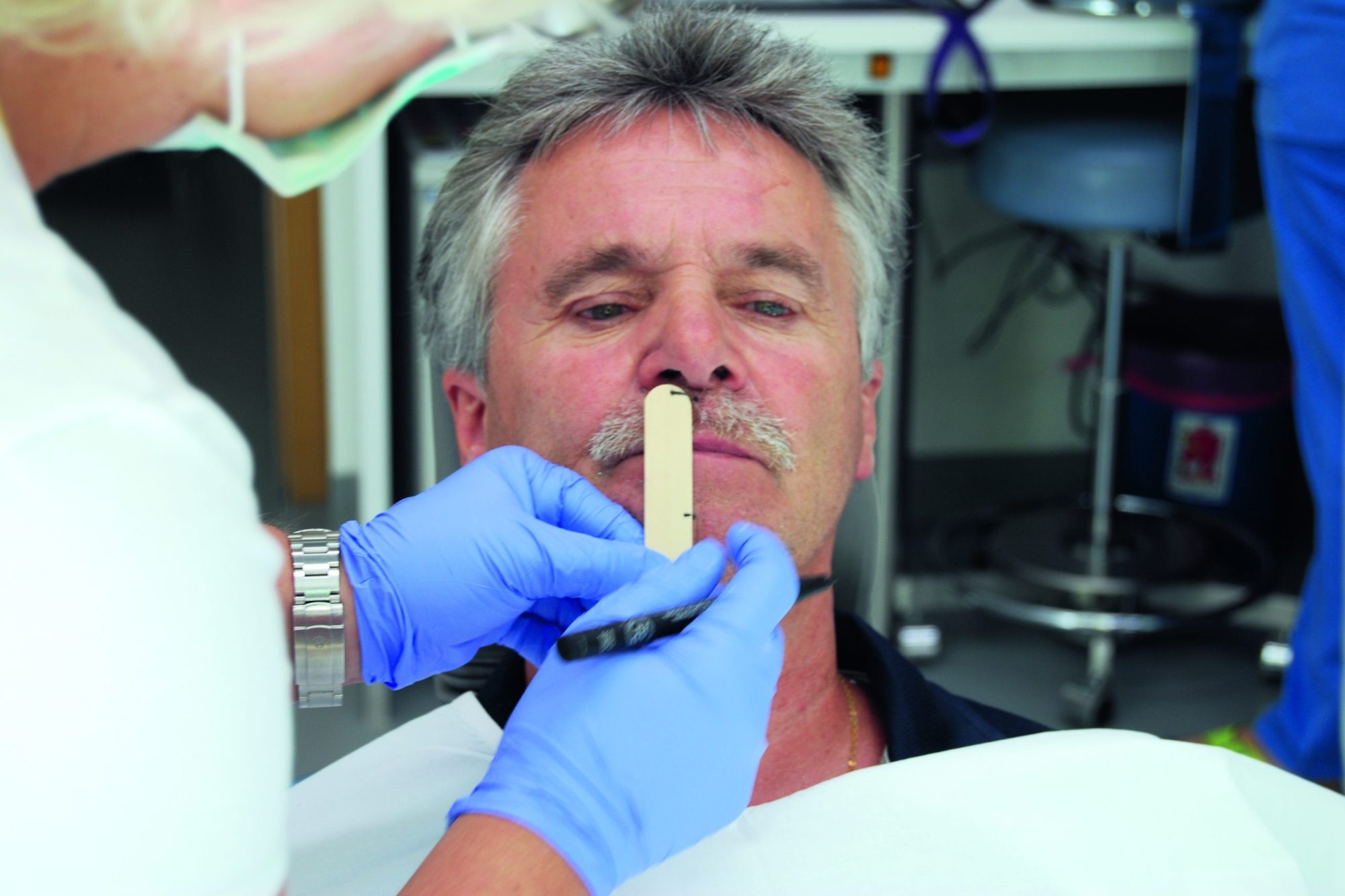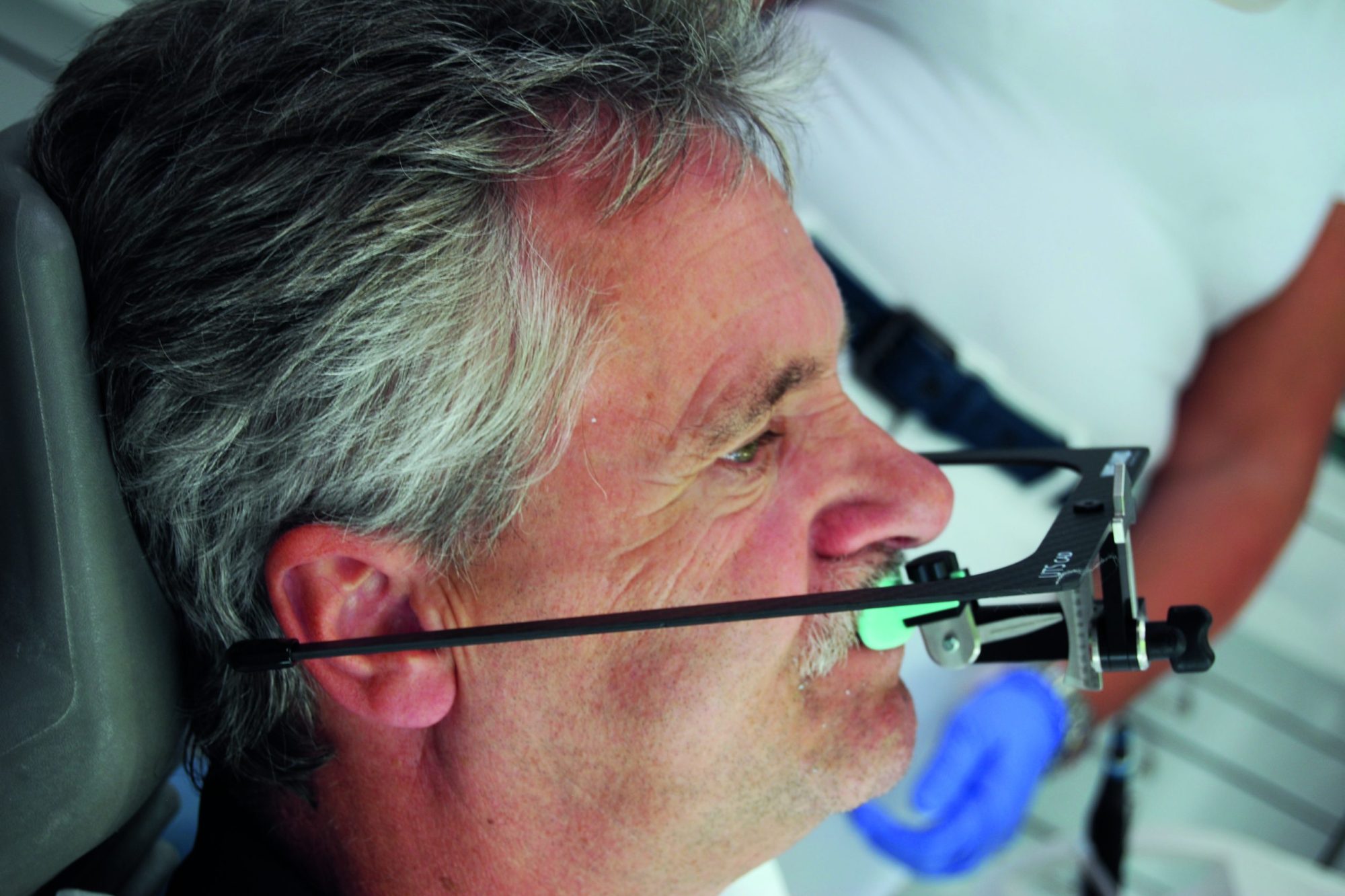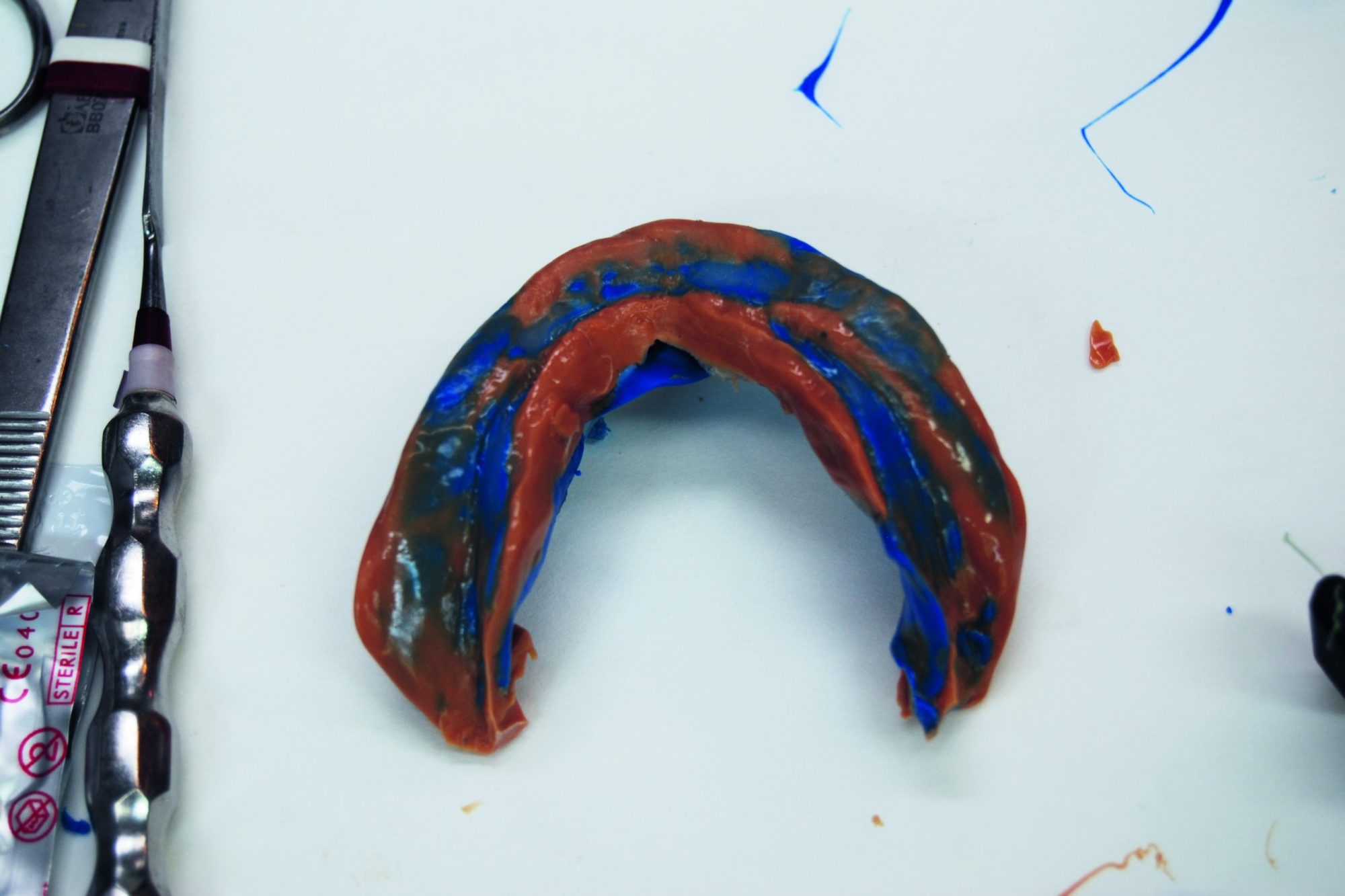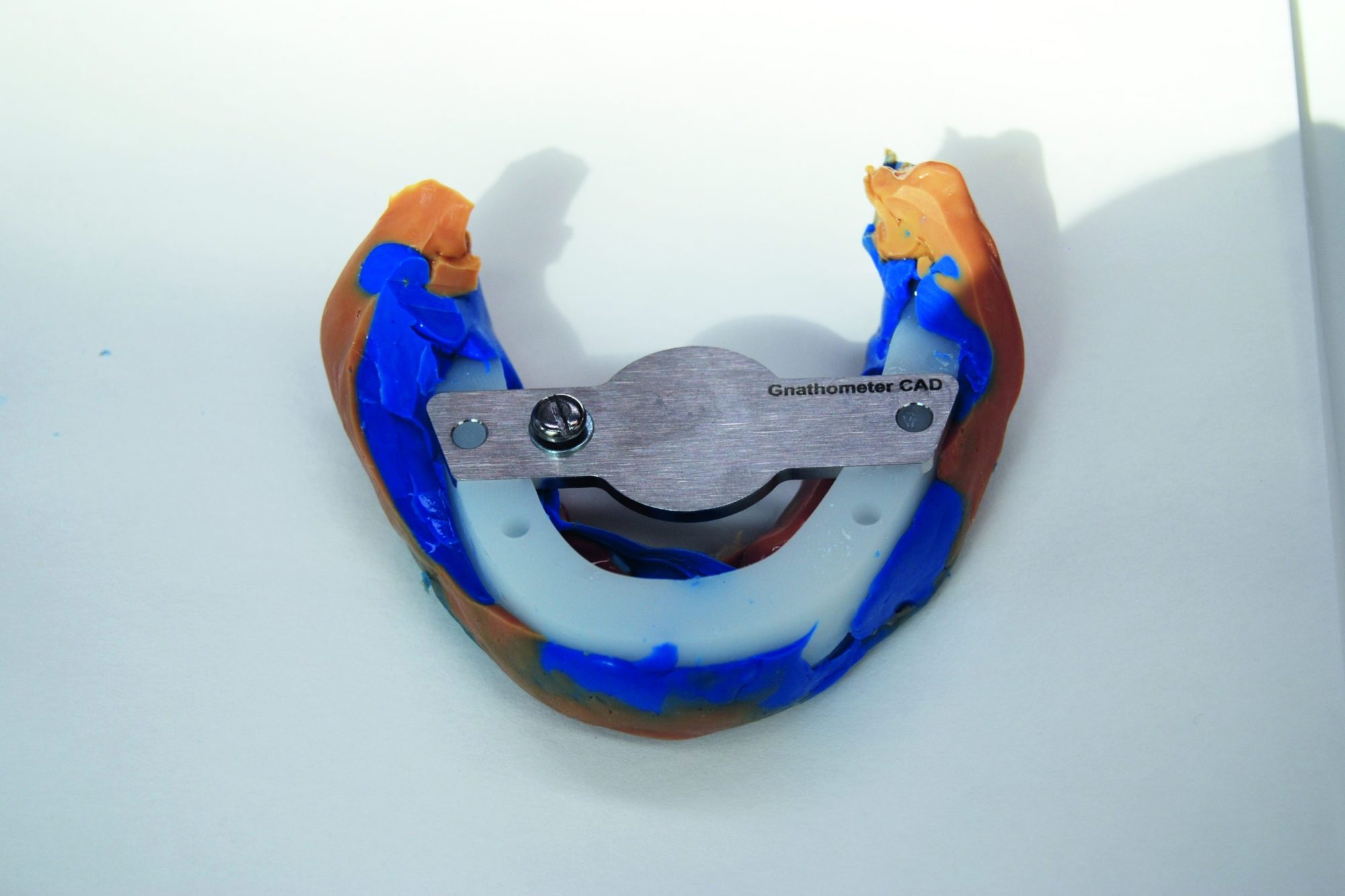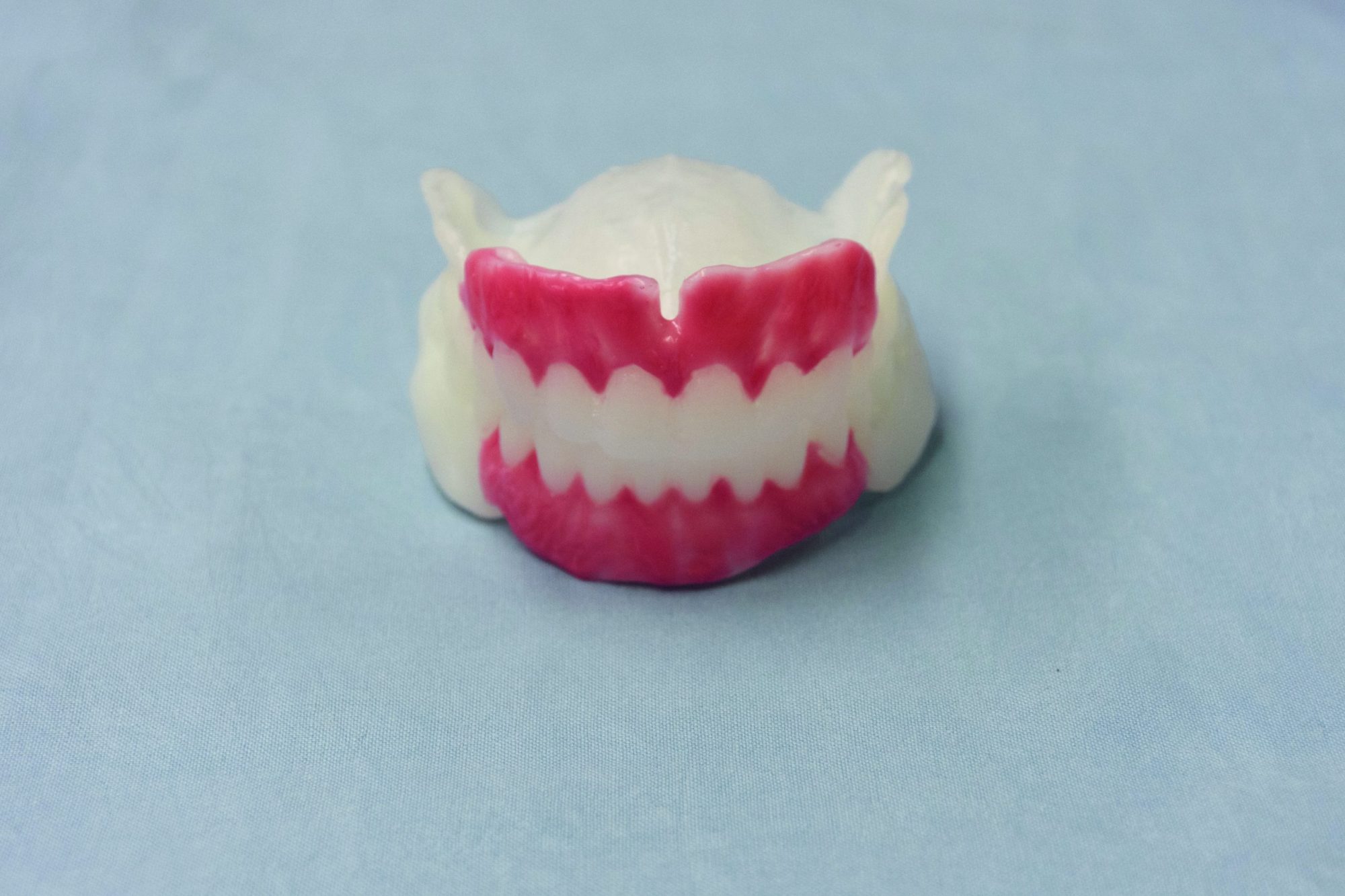
Dr Ingrid Grunert presents an edentulous patient case using complete dentures – but is 3D printing accurate enough?
The world is changing – also from the perspective of dental prosthetics.
There is already talk of industry 4.0, referring to a future project which will lead to a comprehensive digitisation of industrial production processes.
This will affect not only large branches of industry, but also the field of dental prosthetics where the trend towards more and more digitisation and automation is clearly recognisable.
But let’s keep the young horses reined in.
For a project remains a project.
Time and again, we see that we are still far from being able to manufacture many forms of artisanal work in a fully-digitised process.
Using an example of non-invasive restoration with veneers on anterior teeth, the authors show how digital processes can be successfully combined a manufacturing process that is essentially craftwork.
Entering the digital world
Do you make your complete dentures digitally or do you prefer to fabricate them the conventional way?
Digitally designed and milled denture bases display a significantly better fit than conventionally fabricated dentures. Even in challenging mandibular arches.
There are several ways to enter the digital world of complete dentures, depending on the individual wishes and the skills of the prosthetist.
Complete digital dentures can either be milled or printed. The printing of complete dentures is relatively new compared to milled dentures.
The complete digital denture has experienced a real boom in the last few years and has been ubiquitous at conferences and in industry.
This is surprising, since dentures with mucosal support manufactured the conventional way have led a rather shadowy existence for decades in the field of prosthodontics.
In addition, there have been no significant changes or improvements to the conventional concepts.
However, due to the new possibilities of digital production by milling denture bases, there has been great progress in the treatment of edentulous patients. This is because the elimination of polymerisation shrinkage leads to a more uniform prosthesis thus offering improved retention over conventional made dentures.
Denture boom
Several manufacturers have also presented innovative and accelerated methods for the fabrication of complete dentures, in which several working steps are combined in a single session (in particular in taking the impression and the determination of the jaw relation) in order to reduce the total treatment time.
However, this does not necessarily lead to a simplification in the treatment of the edentulous patient, since even experts in complete dentures must learn the new digital workflow.
We are now experiencing a new boom in complete dentures with 3D printed prostheses.
At the Lab Day of the Chicago Midwinter Meeting in 2020, the industry presented a production method for definitive complete dentures, mainly to save time, material, and ultimately cost.
However, it remains to be seen whether this new technology will actually lead to an adaptation of the denture as good as that of the milled bases, since the first studies are just beginning to be published.
What information is required to create functional dentures?
The following results must be properly recorded on the patient to produce functional and aesthetically pleasing digital dentures:
- Precise upper and lower impressions with representation of all areas that will be subsequently covered by the denture
- Determination of the correct vertical dimension of occlusion
- Determination of centric relation
- Determination of the length of the incisal edge of the central incisors central incisors and the midline, paying specific attention to the parallelism of the anterior teeth to the inter pupillary line
- Determination of the inclination of the occlusal plane (parallelism to Camper’s plane).
There are several suppliers of CAD/CAM manufactured dentures including: Avadent, Baltic Dentures, Wieland Digital Dentures, Vita, Amann Girrbach and Dentca Digital Dentures.
Comparison of CAD/CAM systems
The new treatment protocols of the manufacturers have differences in the clinical treatment process compared to conventional total dentures, whereby each system combines different steps and also offers their own tools for this purpose.
Depending on the manufacturer, the number of sessions required for the fabrication of CAD/CAM total dentures varies from two to four sessions up to in situ.
The Baltic Denture System requires the fewest number of clinical sessions required with only two sessions until the insertion of the prosthesis.
The Wieland complete denture system is similar to the conventional procedure with four sessions until the placement of the prostheses.
With all the systems, except the Wieland total denture system, only one impression is necessary. After the impression has been taken, the jaw ratio is determined in the same session.
However, even experienced prosthodontists must get used to the idea of combining several partial passages in a single session.
It is not easy to set the parameters correctly aesthetically and functionally important, because the determination of the vertical dimension and mandibular ratio is performed without wax valleys.
Stay in control
Since it is also much more difficult or even impossible to control the individual underpasses in the new concepts, it is advisable in any case to plan a try-in before the milling of the prostheses in order to detect and eliminate errors while we still have time.
A reassembly to optimise occlusion is also necessary for digital prostheses. The different clinical procedures of the four systems was presented using a clinical case .
With all systems it was possible to fabricate adequate dentures.
To minimise the difficulties of change during the production of the complete dentures, most manufacturers now offer the option of working on individual partial steps up to the wax-up in the usual way and thus benefit from the best adaptation in production CAD/ CAM milling of the bases.
Milled prostheses are more precise
With the milled denture bases, the suction is considerably better due to the more congruous support on the alveolar ridges.
Image 13 visualises the results with before and after phln one study , the accuracy fit of conventionally polymerised dentures was compared with the four-step digital fabrication systems steps (Avadent, Baltic Dentures, Whole You Nexteeth, Wieland Digital Dentures).
Dentures conventionally polymerised showed the greatest difference with the master model.
Avadent prostheses had the smallest difference, followed by Wieland Digital Dentures, Whole You Nex-tooth and Baltic Dentures. However, all the systems fabricated in a digital way had better accuracy than conventionally fabricated dentures, which have a relatively high relatively high polymerisation during their manufacture.
The precision of fit also explains the often surprising suction effect, although the new systems generally require less effort for impression taking compared to conventional production with functional anatomical impressions.
With the new systems, as mentioned above, only one impression is taken with thermoplastic trays and a silicone well scannable silicone, with the exception of Wieland Digital Dentures.
Total dentures with the digital system Wieland
The clinical procedure is described on the basis of a clinical case with very difficult maxillary conditions (Figures 1 and 2).
The Wieland digital denture follows the conventional execution for total dentures with some modifications to save time.
After a first impression in alginate (Figure 3), during the first session we proceeded to the determine the provisional determination of the vertical dimension and centric relation with the Centric Tray and the determination of the occlusal plane using the UTS CAD, a special occluder (Figures 4-7).
The UTS CAD is attached to the adapter of the Centric Tray and is aligned parallel the bipupillary line and the Camper’s plane.
In the laboratory, the first impressions are scanned and the Centric Tray and individual individual impression trays (3DPlates) are made (Figure 8).
These serve as holder for the functional impressions and for the recording instrument (CAD Gnathometer) and thus for the determination of the relationship of the jaws through the registration of the gothic arch (Figures 9-20).
Perfect occlusion
One-piece prostheses can be tried in the third session (Figure 21).
During the try-in an error in occlusion was detected, therefore a new determination was made of the position of the jaw with a centric registration (Figures 22-24 ).
During the fourth session, the finished in situ (Figures 25-26).
The fit of the prostheses and the aesthetic appearance were satisfactory, the occlusion was perfect.
Open questions
Some steps are still missing for the fully digitised production of complete dentures.
It remains to be seen to what extent digital impressions will provide useful results in both the upper and lower.
The weak point still seems to be the lower palate. Although early reports of acquiring data in the mandible with the new scanners can already show acceptable results 171 . It is questionable whether the determination of the centric relation can ever be performed digitally.
Furthermore, it has not yet been clarified whether 3D printed prosthesis can provide clinically acceptable results for a complete denture.
The first in vitro studies show that 3D printing is still too inaccurate. This is also confirmed by clinical cases.
Furthermore, it has not yet been clarified at which angle of inclination the prostheses should be moulded to achieve the best possible accuracy possible.
Conclusion
CAD/CAM complete dentures with milled bases represent a significant a great step forward in the treatment of the edentulous patient thanks to better precision.
Dentures with an excellent suction effect can also be made in difficult jaw situations.
To avoid having to familiarise yourself with the accelerated treatment paths it is recommended that those who do not have a large number of edentulous patients with mucosa-supported dentures to perform the clinical procedures up to and including the wax-up in the usual manner.
It remains to be seen whether 30 printed dentures will be equivalent to milled dentures.
Follow Dentistry.co.uk on Instagram to keep up with all the latest lab news and trends.





